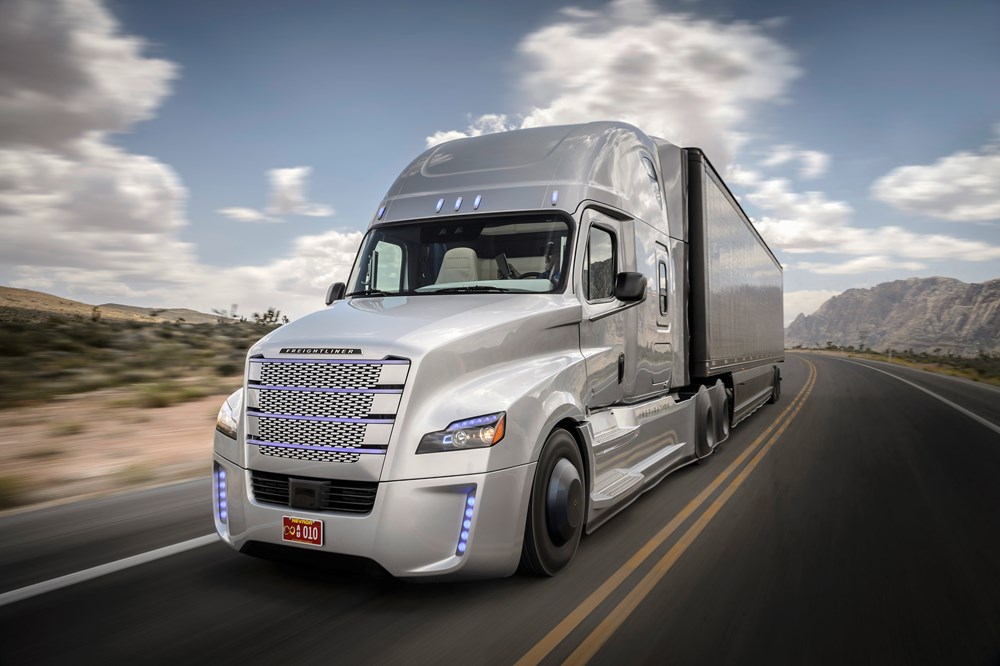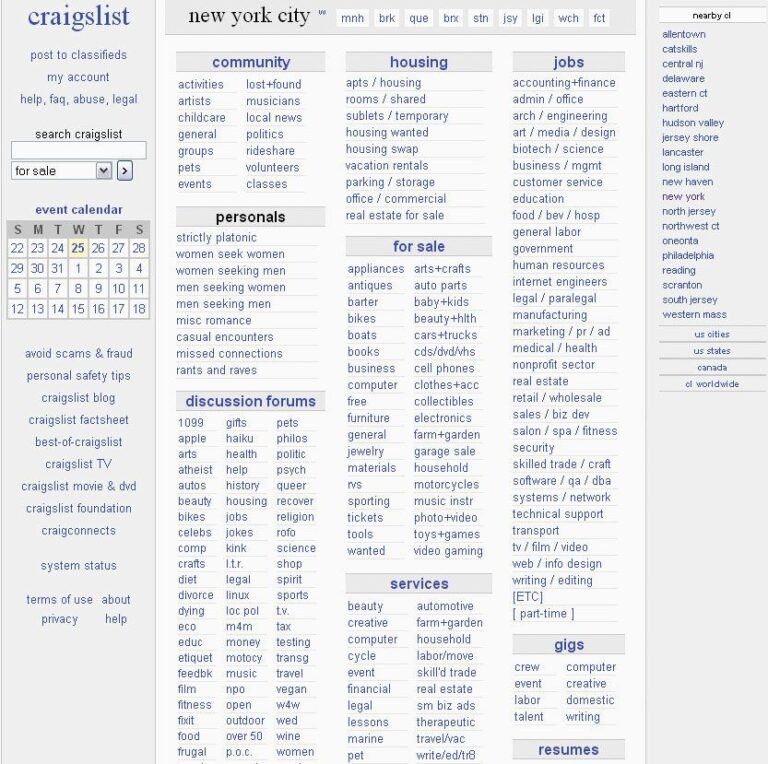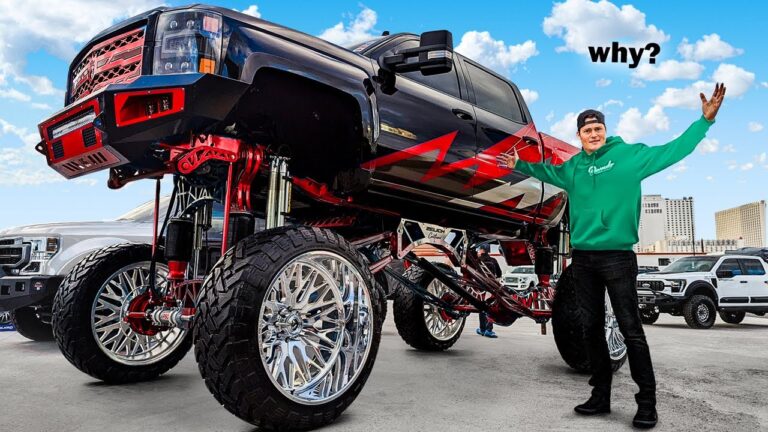Truck Campershell Comparison Chart: Your Definitive Guide to Choosing the Perfect Shell
Truck Campershell Comparison Chart: Your Definitive Guide to Choosing the Perfect Shell cars.truckstrend.com
For truck owners, the bed of their vehicle represents more than just cargo space; it’s a canvas for utility, adventure, and protection. Transforming this open area into a secure, weather-resistant, and often habitable enclosure is where the magic of a truck campershell comes into play. Also known as truck caps, toppers, or canopies, these versatile additions elevate a pickup truck from a simple hauler to a multi-functional basecamp, mobile workshop, or secure storage unit.
However, the market is brimming with options, making the decision-making process daunting. From materials and designs to features and price points, navigating the vast array of choices requires careful consideration. This comprehensive guide, complete with a detailed comparison chart, is designed to demystify the process, helping you pinpoint the ideal truck campershell that aligns perfectly with your needs, budget, and adventurous spirit.
Truck Campershell Comparison Chart: Your Definitive Guide to Choosing the Perfect Shell
Understanding Truck Campershells: More Than Just a Cover
At its core, a truck campershell is a rigid or semi-rigid cover that fits over the bed of a pickup truck, typically extending from the cab to the tailgate. Their primary purpose is to protect cargo from the elements (rain, snow, sun), theft, and road debris. Beyond basic protection, modern campershells offer a myriad of functionalities:
- Secure Storage: Keeps tools, gear, and valuables safe from prying eyes and hands.
- Enhanced Organization: Allows for shelving, drawers, and tie-downs within the bed.
- Camping and Overland Travel: Transforms the truck bed into a comfortable sleeping area, often with insulation, lighting, and power options.
- Work and Utility: Provides a weather-protected space for contractors, tradespeople, and mobile service providers.
- Improved Aerodynamics: Some designs can slightly improve fuel efficiency by reducing drag, though this is often minimal.

The importance of a comparison chart lies in its ability to break down complex choices into manageable, comparable attributes. It allows potential buyers to quickly assess different models side-by-side, weighing their pros and cons against specific requirements.
Key Factors for Comparison: What to Look For
Before diving into specific models, it’s crucial to understand the critical attributes that differentiate one campershell from another. These factors will form the columns of our comparison chart and guide your decision-making.
1. Material

The choice of material dictates durability, weight, appearance, and cost.
- Fiberglass: The most common material, offering a smooth, paintable surface that can be color-matched to your truck. It’s durable, weather-resistant, and aesthetically pleasing.
- Aluminum: Lighter and often more utilitarian in appearance, aluminum shells are popular for work trucks due to their ruggedness and lower cost. They can be diamond plate or smooth.
- ABS Plastic (Thermoplastic): Lighter and more affordable than fiberglass, but generally less durable and often have a textured finish.
- Canvas/Fabric (Soft Toppers/Pop-ups): Used for lightweight, collapsible shells, often for recreational or camping purposes, providing less security but excellent versatility.

2. Design and Style
The aesthetic and functional design significantly impact usability.
- Cab-High: Matches the height of the truck’s cab, maintaining the truck’s original lines. Good for general use and aerodynamics.
- High-Rise/Mid-Rise: Taller than the cab, offering increased interior volume for cargo or standing room. Ideal for camping or bulky items.
- Wedge/Slanted: Higher at the rear and sloping down towards the cab, offering a balance of aerodynamics and rear cargo space.
- Pop-Top/Wedge Camper: Features a collapsible roof that pops up to provide standing room and often a sleeping platform, turning the truck into a compact RV.
- Commercial/Work Shells: Often made of aluminum, with side access doors, toolboxes, and internal shelving for specialized work needs.
3. Features and Accessories
Modern campershells can be highly customized with various add-ons.
- Windows: Sliding, vented, fixed, or frameless. Consider tinting for privacy and UV protection.
- Rear Door: Single or double doors, often with robust locking mechanisms.
- Interior Lighting: Battery-powered or wired into the truck’s electrical system.
- Roof Racks: For carrying bikes, kayaks, lumber, or roof-top tents.
- Interior Lining/Insulation: Carpeting or insulation improves comfort, reduces condensation, and protects cargo.
- Power Outlets: USB ports, 12V outlets for charging devices or powering accessories.
- Security: Reinforced locks, alarm integration.
- Ventilation: Vented windows or roof vents to prevent heat buildup and condensation.
4. Weight
The shell’s weight affects fuel economy, payload capacity, and handling. Lighter materials like aluminum or fabric are advantageous for those concerned about weight.
5. Security
How well does it protect your gear? Look for robust locking mechanisms and durable construction.
6. Compatibility
Ensure the shell is specifically designed for your truck’s make, model, and bed length.
7. Price
Campershells range from a few hundred dollars for used basic models to several thousand for new, feature-rich, specialized campers.
8. Brand Reputation and Warranty
Established brands often offer better customer support, parts availability, and comprehensive warranties.
Types of Campershells and Their Characteristics
Based on the factors above, here are broad categories of campershells you’ll encounter:
- Basic Fiberglass Cab-High: The most common type, offering a sleek, integrated look and good protection. Great for general use, light camping, and secure storage.
- High-Rise Fiberglass: Maximizes cargo volume, ideal for those needing extra head space or carrying taller items. Popular for campers and tradesmen.
- Aluminum Work/Commercial Shells: Built for durability and utility. Often feature external toolboxes, ladder racks, and robust construction. Less focus on aesthetics, more on function.
- Soft Toppers/Foldable Shells: Lightweight, easy to remove, and often more affordable. Offer basic weather protection and are great for recreational users who need flexibility.
- Pop-Top/Wedge Campers: The ultimate in versatility for overlanders. They provide standing room and a sleeping area, essentially converting the truck into a mini-RV. They are the most expensive but offer unparalleled utility for adventurers.
Practical Advice: How to Choose the Right Campershell
Choosing the perfect campershell involves a clear understanding of your primary use case.
-
Define Your Primary Need:
- Secure Storage/Work: Prioritize durability, security, and internal organization (e.g., aluminum work shell, basic fiberglass with good locks).
- Casual Camping/Overlanding: Look for standing room, ventilation, insulation, and power options (e.g., high-rise fiberglass, pop-top camper).
- General Protection/Aesthetics: Focus on color-matching, sleek design, and basic security (e.g., cab-high fiberglass).
- Budget-Friendly/Light Use: Consider soft toppers or used fiberglass shells.
-
Measure Your Truck Bed: Always verify your truck’s bed length and width. Campershells are model-specific.
-
Consider Your Budget: Set a realistic budget, remembering that installation costs and potential accessories (roof racks, interior lighting) can add to the total.
-
Research Brands and Reviews: Look up user reviews and testimonials for different brands to gauge quality, durability, and customer service.
-
New vs. Used: Used campershells can offer significant savings, but finding one that perfectly matches your truck’s color and fit can be challenging. Inspect used shells thoroughly for cracks, leaks, and damage.
Installation and Maintenance Considerations
- Professional Installation: While some shells can be self-installed, professional installation ensures a proper fit, weather sealing, and often includes wiring for lights and power.
- Weight Distribution: Be mindful of the added weight, especially with heavy fiberglass or fully loaded shells. It can affect your truck’s suspension and handling.
- Regular Cleaning: Wash your campershell regularly, just like your truck, to prevent dirt and grime buildup.
- Seal Inspection: Periodically check the weather seals around windows and the base to ensure they remain watertight.
- Lock Lubrication: Keep locks lubricated to prevent seizing.
Potential Challenges and Solutions
- High Cost: New, feature-rich shells, especially pop-tops, can be very expensive. Solution: Consider used options, more basic models, or save up for the shell that truly meets your needs.
- Reduced Visibility: Some high-rise or commercial shells can significantly reduce rear visibility. Solution: Install a backup camera or adjust mirrors accordingly.
- Weight Impact: Heavy shells can affect fuel economy and suspension. Solution: Consider lighter materials (aluminum, soft tops) or upgrade your truck’s suspension if regularly carrying heavy loads.
- Compatibility Issues: Not all shells fit all trucks. Solution: Double-check fitment charts and consult with dealers or manufacturers.
Truck Campershell Comparison Chart
Here’s a representative comparison chart detailing various types of truck campershells, including estimated price ranges. Prices can vary significantly based on brand, specific features, and regional market conditions.
| Campershell Type/Model (Hypothetical) | Material | Key Features | Pros | Cons | Estimated Price Range (New) |
|---|---|---|---|---|---|
| Basic Cab-High Fiberglass | Fiberglass | Front sliding window, side sliding windows, rear door w/ lock, interior dome light, carpeted headliner. | Sleek, color-matchable, good protection, common. | Limited headroom, can be heavy. | $1,800 – $3,000 |
| High-Rise Fiberglass | Fiberglass | Taller design for maximum volume, front sliding window, side windoors (pop-out or slider), heavy-duty rear door, interior light. | Ample headroom, great for camping/tall items, secure. | Affects truck aesthetics, heavier, slightly higher center of gravity. | $2,200 – $3,800 |
| Standard Aluminum Work Shell | Aluminum | Plain finish, side access doors with T-handle locks, optional interior shelving/bins, ladder rack ready. | Lightweight, extremely durable, highly functional for work. | Utilitarian appearance, less insulated, can be noisy. | $1,500 – $2,800 |
| Premium Aluminum Overland Shell | Aluminum | Rugged design, integrated roof rails, reinforced for heavy loads, side access panels with Molle panels, optional power/lighting. | Very robust, highly customizable for adventure gear, lighter than high-end fiberglass. | Still utilitarian, can be pricey for advanced features. | $2,500 – $4,500 |
| Soft Topper / Canvas Shell | Fabric/Vinyl | Collapsible frame, zippered side/rear access, lightweight. | Very lightweight, easy to remove/store, affordable, flexible. | Less secure, poor insulation, limited protection from sharp objects, not as durable. | $700 – $1,500 |
| Wedge Camper / Pop-Top Camper | Aluminum/Fiberglass | Collapsible roof (manual/electric), integrated sleeping platform, standing room when popped, often with power management, lights, and fans. | Ultimate versatility for camping/overlanding, compact for daily driving, durable. | Most expensive, complex installation, added weight (can be significant), setup required. | $8,000 – $20,000+ |
Note: Prices are estimates and can vary based on brand, features, installation, and market fluctuations. Custom features and premium brands will fall on the higher end of the spectrum.
Frequently Asked Questions (FAQ)
Q1: Will a campershell affect my truck’s fuel economy?
A1: Generally, a cab-high campershell can slightly improve fuel economy by reducing aerodynamic drag (often 1-2 MPG). However, heavier or high-rise shells, especially when loaded, can negatively impact fuel economy due to increased weight and drag.
Q2: Can I install a campershell myself?
A2: Basic installation (clamping it to the bed rails) is often possible for two people. However, wiring for interior lights, third brake lights, or power outlets usually requires some electrical knowledge or professional help. It’s crucial to ensure proper sealing to prevent leaks.
Q3: How much weight can a campershell hold on its roof?
A3: This varies significantly by manufacturer and model. Standard fiberglass shells might hold 100-200 lbs static load, while reinforced aluminum or overland shells with integrated roof racks can support 500 lbs or more, often designed for rooftop tents. Always check the manufacturer’s specifications.
Q4: Are campershells waterproof?
A4: Most new, properly installed campershells are highly water-resistant. However, no campershell is 100% waterproof, especially in torrential downpours or high-pressure car washes, due to the nature of the truck bed and tailgate design. Minor leaks can sometimes occur, often fixable with additional weather stripping.
Q5: Is it worth buying a used campershell?
A5: Buying used can save a significant amount of money. However, finding one that precisely fits your truck’s make, model, year, and color can be challenging. Thoroughly inspect used shells for cracks, leaks, damaged windows, and functional locks before purchasing.
Q6: Do I need to remove my truck bed liner before installing a campershell?
A6: Most drop-in bed liners are designed to work with campershells, but some may interfere with the clamps or sealing. Spray-in bed liners are generally not an issue. If you have a thick, aftermarket drop-in liner, it’s best to consult with the campershell installer or manufacturer.
Conclusion
The truck campershell market offers a solution for nearly every need and budget. Whether you’re an avid camper seeking a mobile basecamp, a tradesperson requiring secure tool storage, or simply looking to protect your cargo from the elements, a campershell can dramatically enhance your truck’s utility. By carefully considering the material, design, features, and your primary use case, and utilizing a comprehensive comparison approach like the one outlined here, you can confidently choose the perfect campershell. It’s an investment that not only protects your gear but also unlocks a new realm of possibilities for your truck and your lifestyle.






